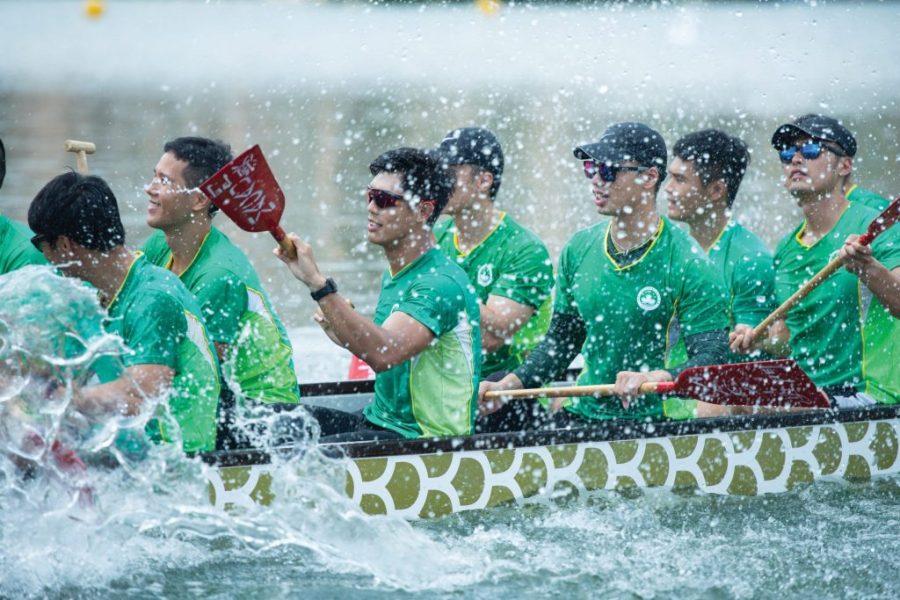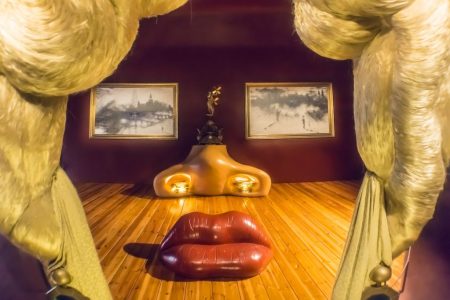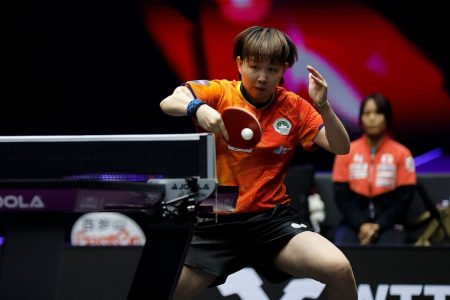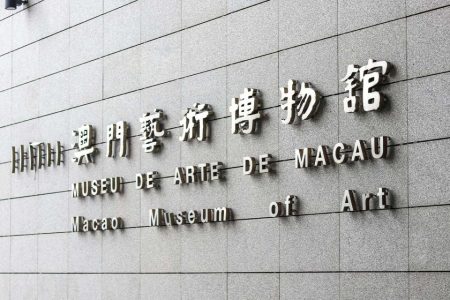Most people are familiar with tangible heritage – a city’s physical history, such as its archaeological sites, historical monuments, ancient buildings and old artefacts. But equally important is a city’s intangible cultural heritage – its local beliefs, customs, events, festivals, foods, rituals, arts and crafts, which have been passed down over many generations, sometimes over hundreds of years.
“Intangible cultural heritage is a cultural lifestyle and a spiritual phenomenon that has been circulating a long time but is still alive and developing,” says Professor Zhu Shoutong, director of the Centre for Chinese History and Culture at the University of Macau. “It vividly connects tradition and reality – and it continues to impact people’s lives in the future.”
To preserve and protect the city’s intangible heritage for future generations, the Cultural Affairs Bureau of Macao published a list of 15 items of Macao’s intangible cultural heritage in 2017. On it were a handful of Taoist customs, a couple of Catholic processions, a type of Cantonese opera, the entirety of Macanese gastronomy and a few other items of local importance.
These items stood alone for three years until August 2020, when the government added another 55 elements to the list, bringing the total tally up to 70. The new additions to the inventory are as diverse as they are comprehensive, seemingly covering every intangible piece of history that collectively make Macao unique.
“These new items reinforce our responsibility to bring out these traditions from the past to the present. Otherwise, they will fade away and be forgotten.”
“The inventory has truly reflected the cultural charm and uniqueness of Macao, where various cultures and traditions can thrive alongside the dominant Chinese culture,” adds Professor Zhu.
“It reinforces our responsibility to bring out these traditions from the past to the present so we can let more people know about them. Otherwise, they will fade away and be forgotten.”
From dragon beard candy to Taoist music, Portuguese folk dancing, Baatyam percussion, Patuá, tai chi, Portuguese tiles, Cantonese opera, festivals, and religious processions, the list is vast and varied. We’ve compiled a list of Macao’s intangible cultural heritage across four main categories to celebrate what makes our city so unique:
Art expressions and items of performing nature
1. Yueju Opera (Cantonese Opera)
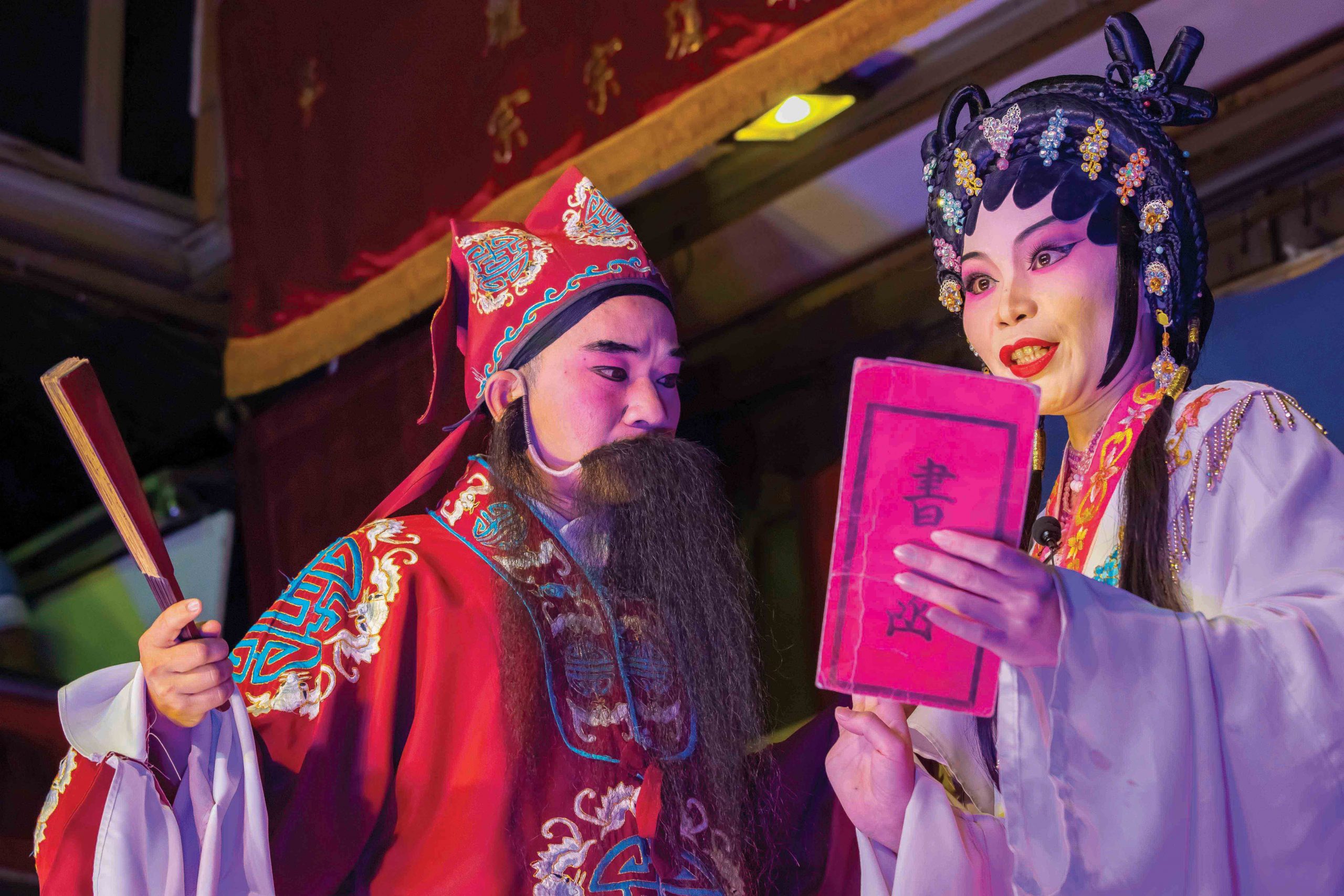
Prevalent in Cantonese-speaking regions, including Macao and Hong Kong, Yueju opera features bright make-up and exquisitely embroidered Cantonese costumes. The storylines are also fascinating, covering a wide range of subjects, such as romantic encounters, historical events, ghost stories and moral teachings.
2. Cantonese Naamyam (narrative songs)
Originating from the Pearl River Delta region, these songs were initially performed by the blind, but today they are performed by specialist singers trained in the art form. They tell compelling, long-form narratives that have been known to last many weeks.
3. Taoist Ritual Music
Taoism’s ritual music – characterised by various instruments such as large drums, bells, and wooden fish blocks called muyu – is an integral part of traditional Chinese folk music. Nearly 500 items of this music have been preserved in Macao, and they are performed on various occasions such as funerals, wedding banquets and the birthdays of the Taoist gods.
4. Patuá Theatre
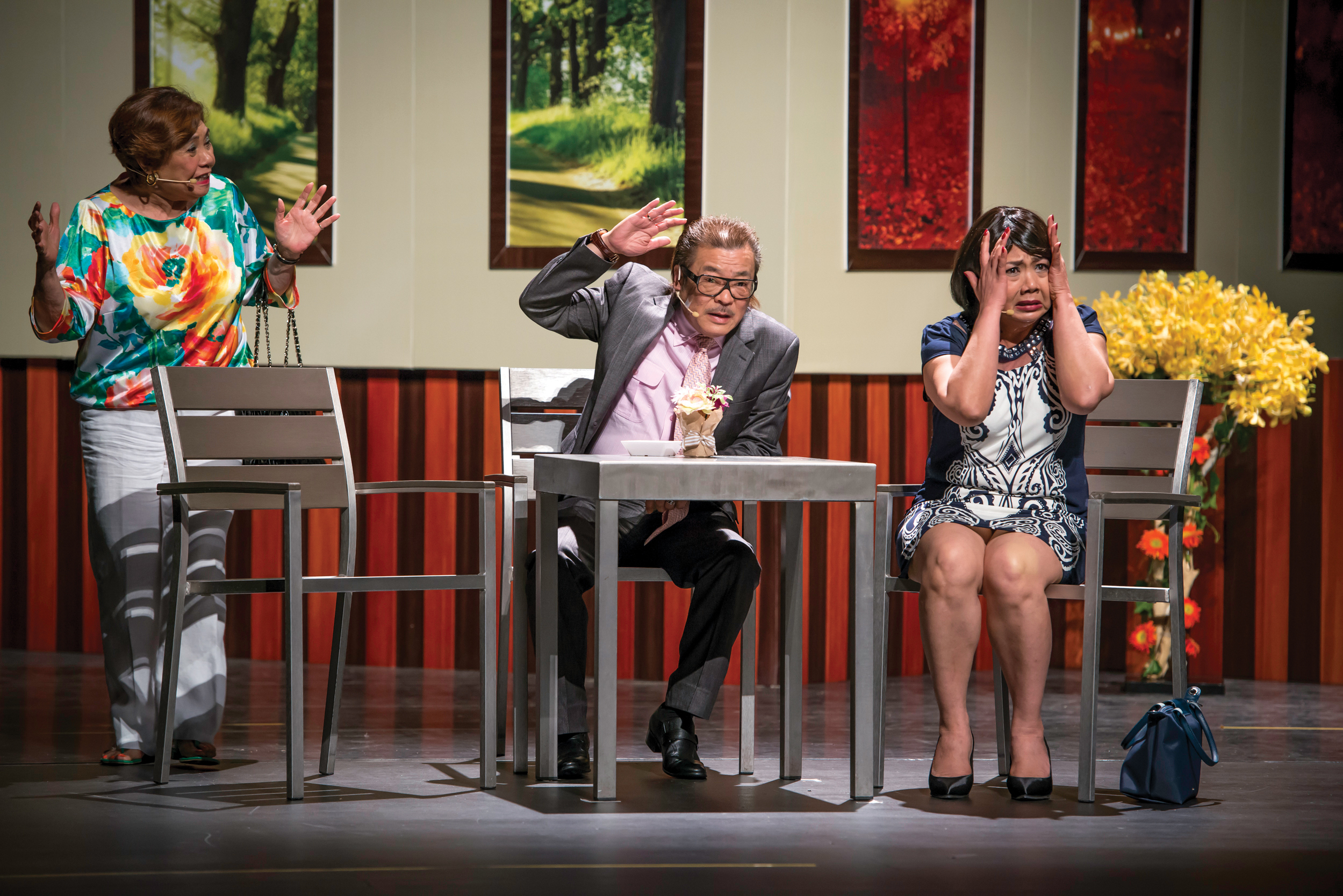
Patuá is a language system that was once formed by Portuguese immigrants in Macao. Patuá theatre expresses the unique characteristics of the language on the stage through satirical skits and comedic situations.
5. Dragon Dance
One of Macao’s most beloved folk performances, the dragon dance, blesses the community and celebrates nature. It is often performed during local celebrations and festivals, such as Chinese New Year and the Birthday of Mazu (a Chinese sea goddess).
6. Lion Dance
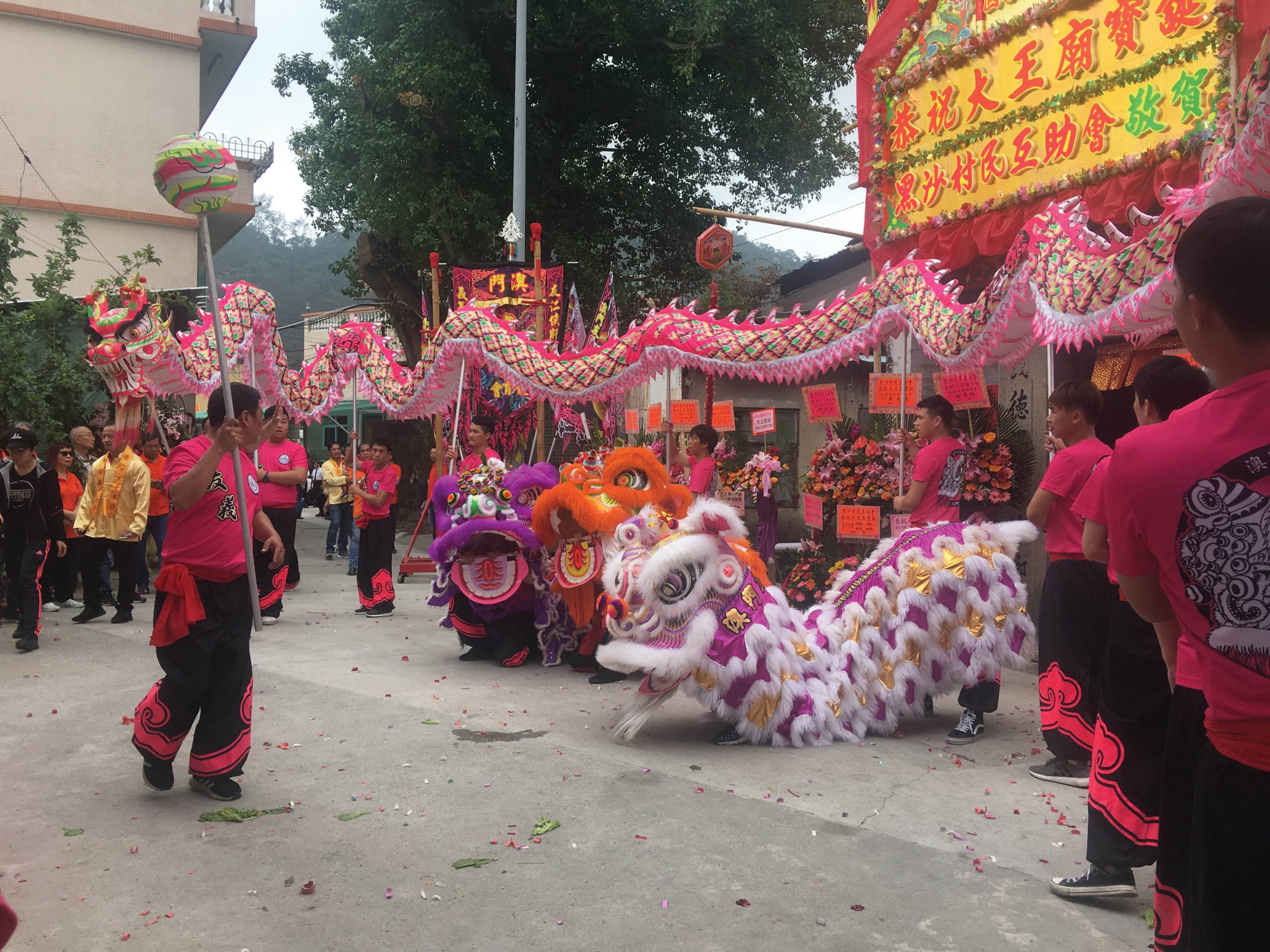
An auspicious display in traditional Chinese culture, lion dances are performed during temple fairs, weddings and folk festivals to enhance the festive atmosphere.
7. Portuguese Folk Dance
This dance originated in Portugal’s rural areas as an artistic performance that combines traditional folk dancing, singing and music. It was introduced to Macao hundreds of years ago.
8. Saltwater Songs
Sung in the Guangzhou dialect, saltwater songs are traditional oral expressions that reflect fishermen’s culture and daily life in Macao.
9. Baatyam Percussion
This is part of the traditional Chinese performance art quyi. Baatyam percussion features Cantonese opera songs using Chinese wind, bowed string, plucked string and percussion instruments.
Social practice, religious practice, rituals and festive events
10. Festival of the Drunken Dragon

On the evening of the seventh day of the fourth month of the Chinese lunar calendar (which usually falls in mid-May), Macao’s fishmongers gather for this colourful feast and dance with a “drunken” dragon. They drink and dance through the streets, blessing the local shops and spectators along the way.
11. Belief and Customs of A-Ma
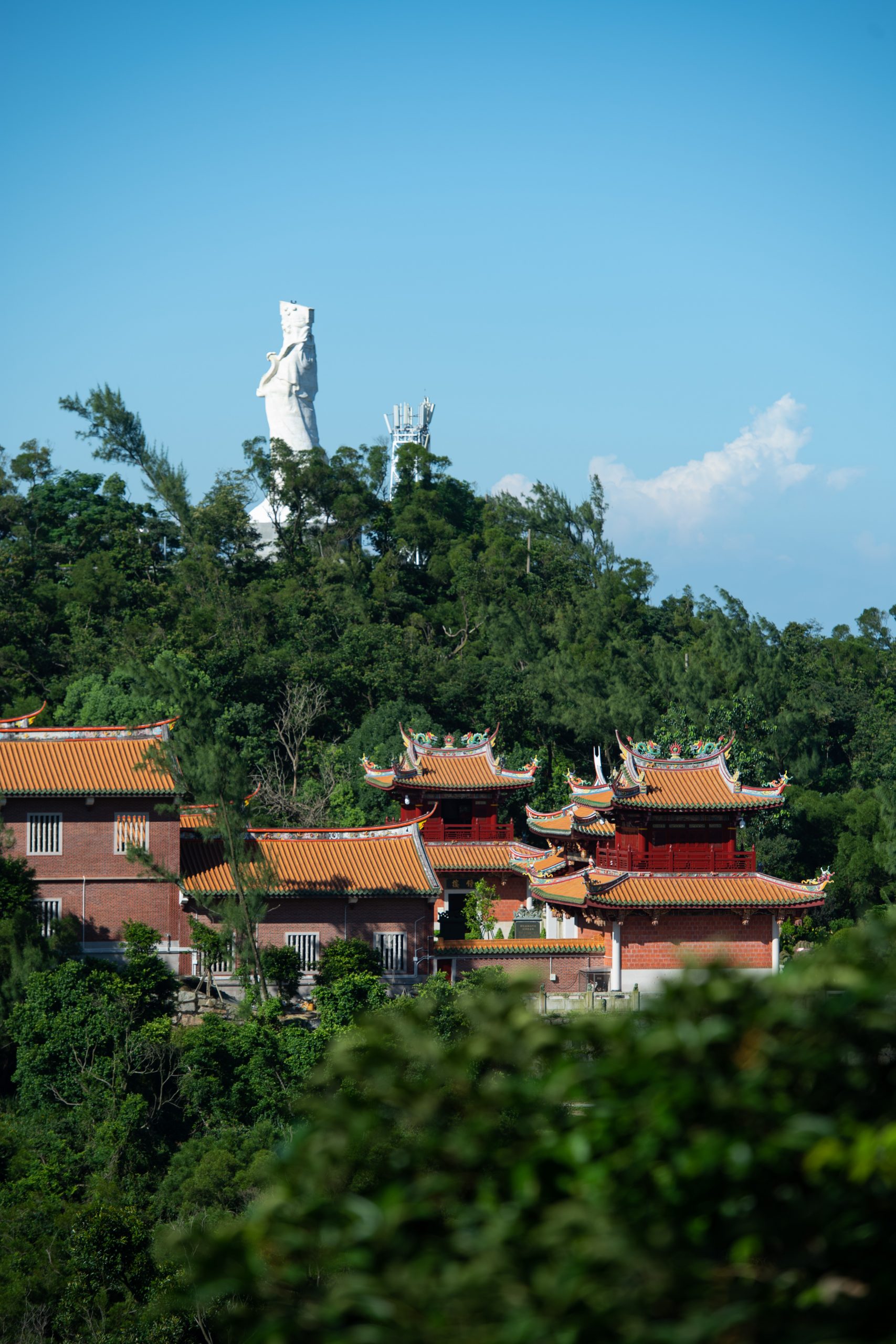
Macao celebrates the Festival of A-Ma on the 23rd day of the third lunar month by burning incense sticks, hanging ornate lanterns and hosting Chinese operas at the A-Ma Temple.
12. Belief and Customs of Na Tcha
Na Tcha is a child god in Taoism. Many local activities are dedicated to him, including parades, the making of “Na Tcha lucky charms” (a religious item that is believed to bring luck) and firecracker-grabbing races.
13. Belief and Customs of Tou Tei
Tou Tei, a folk deity, is thought to protect the life and health of residents. In Macao, Tou Tei is honoured with altars, temples and a festival on the second day of the second lunar month, roughly February or March each year.
14. Belief and Customs of Chu Tai Sin
A deity of medicine, Chu Tai Sin is the focus of the only water-based jiao – a ritualistic ceremony – in the city. It’s held by the fishing community in the fifth month of the Chinese calendar, which typically falls in June.
15. Procession of the Passion of Our Lord, the God Jesus
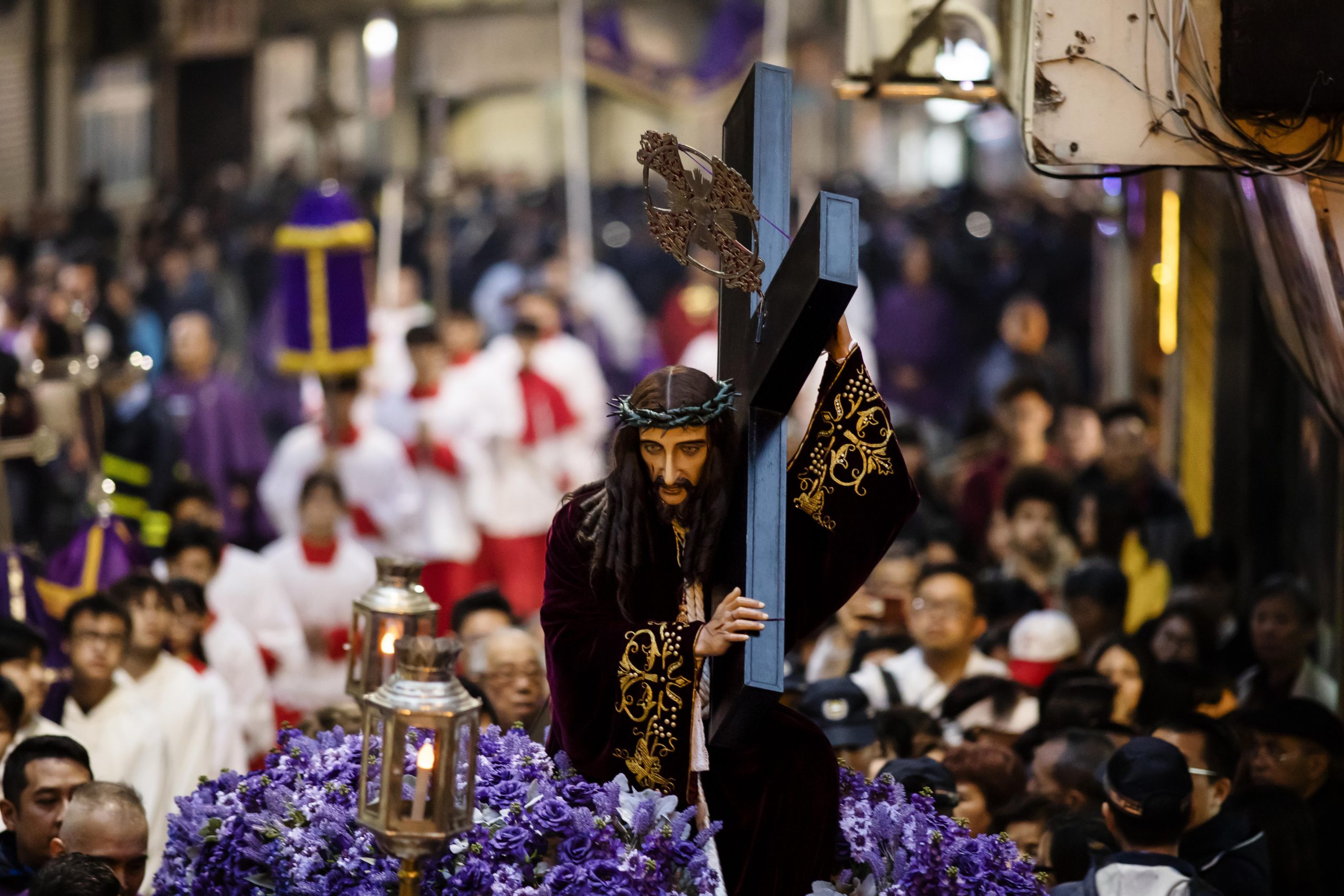
Taking place on the first Saturday and Sunday of Lent in February or March, this two-day Catholic procession recalls the experiences of the Passion and the death of Jesus as depicted in the Bible.
16. Procession of Our Lady of Fatima
This procession takes place on 13 May and features two girls and a boy who symbolise the young shepherds who witnessed the Virgin Mary in Portugal during the First World War. The Macao Procession of Our Lady of Fatima first took place in 1929, led by the Bishop of the Roman Catholic Diocese of Macau.
17. Procession of the Dead Lord
A parade held by the Roman Catholic Diocese of Macao on the Friday before Easter every year to commemorate the death of Jesus.
18. Procession of Saint Anthony
Held by the Roman Catholic Diocese of Macao around 13 June, the Procession of Saint Anthony celebrates the life of St Anthony of Padua, the patron saint of lost people, items and spiritual goods.
19. Feast of Saint John
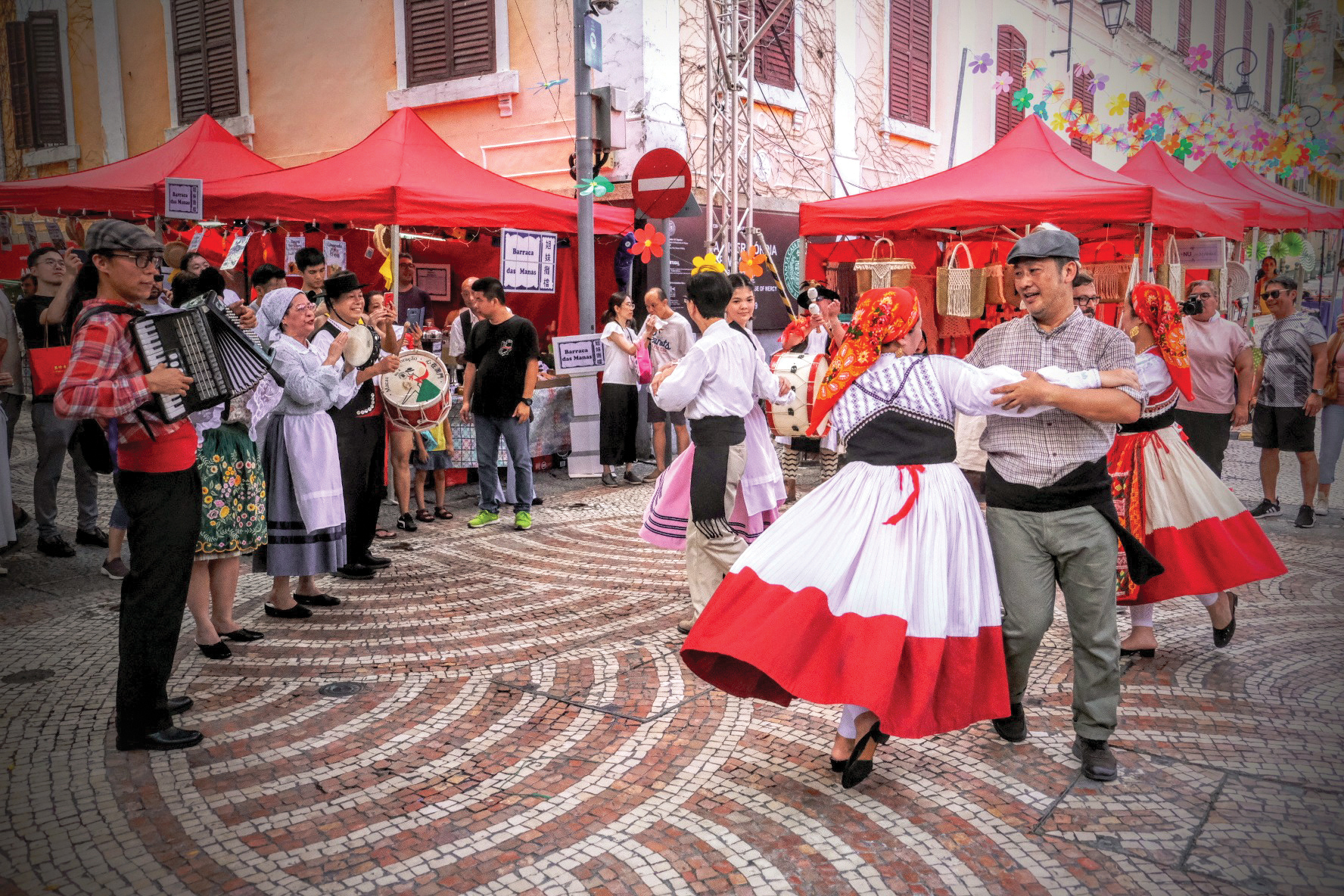
Held in June, this traditional festival commemorates the Portuguese victory against Dutch invaders in 1622. Saint John was believed to have “given a hand” to the defenders of Macao.
20. Procession of Saint Roque
This procession, which takes place in July, pays tribute to São Roque, a Catholic saint who is believed to have performed miracles and saved the sick during the plague in Europe in the 14th century. The local parade originated during a 19th-century plague in Macao.
21. Feast of Saint Martin, aka “Chestnut Festival”
Held on 11 November, this is a traditional festival which celebrates an act of kindness by Portuguese Saint Martin, who cut his cloak in half to share with a beggar during the fourth century. Traditionally, people get together to eat chestnuts and drink new wine during the festival to celebrate the harvest.
22. Feast of Immaculate Conception
Every 8 December since the early 19th century, the immaculate conception of Mary, the mother of Jesus, is celebrated in Macao. Though it is called a “feast”, the holy day does not have anything to do with food – local churches and Catholic schools organise masses and processions in honour of Mary.
23. Spring Festival
Mainly derived from old customs in the ancient Lingnan area of southern China and northern Vietnam, the Spring Festival evolved to include activities like thanking the Kitchen God, New Year’s Eve dinner and a visit to the New Year’s Eve Flower Market.
24. Lantern Festival
On the 15th day of the first lunar month (roughly early or mid-February), the lantern festival is known as the Chinese Valentine’s Day. Celebratory activities include guessing lantern riddles and making lanterns.
25. Sacrifice Offering to the White Tiger on Insect Awakening Day
Originating from Guangdong, this folk custom sees people praying at temples and shrines dedicated to Tudigong, the Taoist God of Earth, on 5 or 6 March. Worshippers usually appeal to the mythical “white tiger” for their family’s safety, good health, and protection from bad luck and sickness.
26. Cheng Ming (Day of the Departed)
Observed in early April, this traditional custom starts in the morning by paying respect to distant ancestors. Other activities include visiting the graves of close relatives and burning paper money, which is thought to be used by the deceased in the underworld.
27. Tung Ng (Dragon Boat Festival)
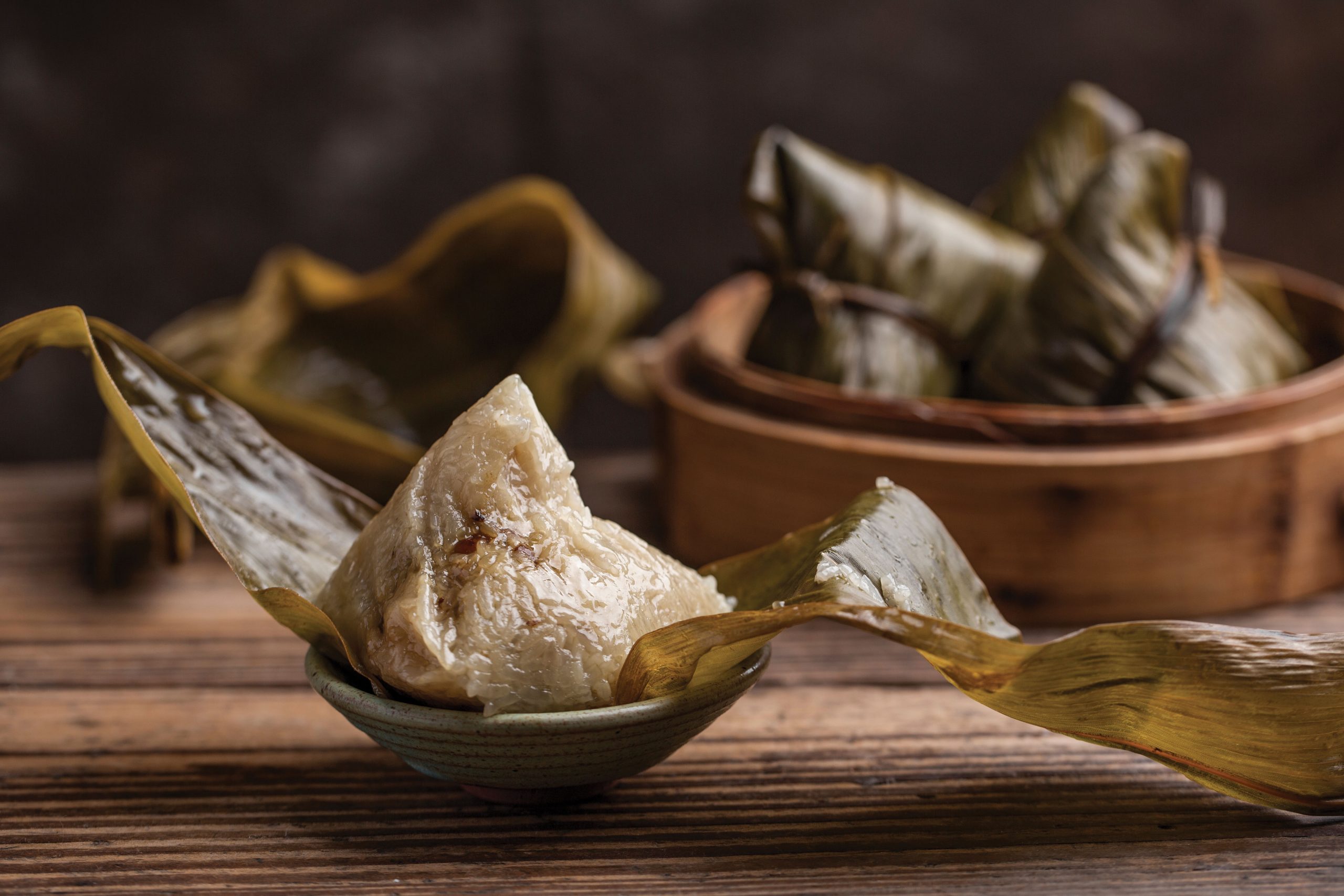
On the fifth day of the fifth lunar month, Macao celebrates Tung Ng (also known as Dragon Boat Festival) by hosting dragon boat races in the city’s waters, eating rice dumplings and swimming.
28. Dragon Boat Racing
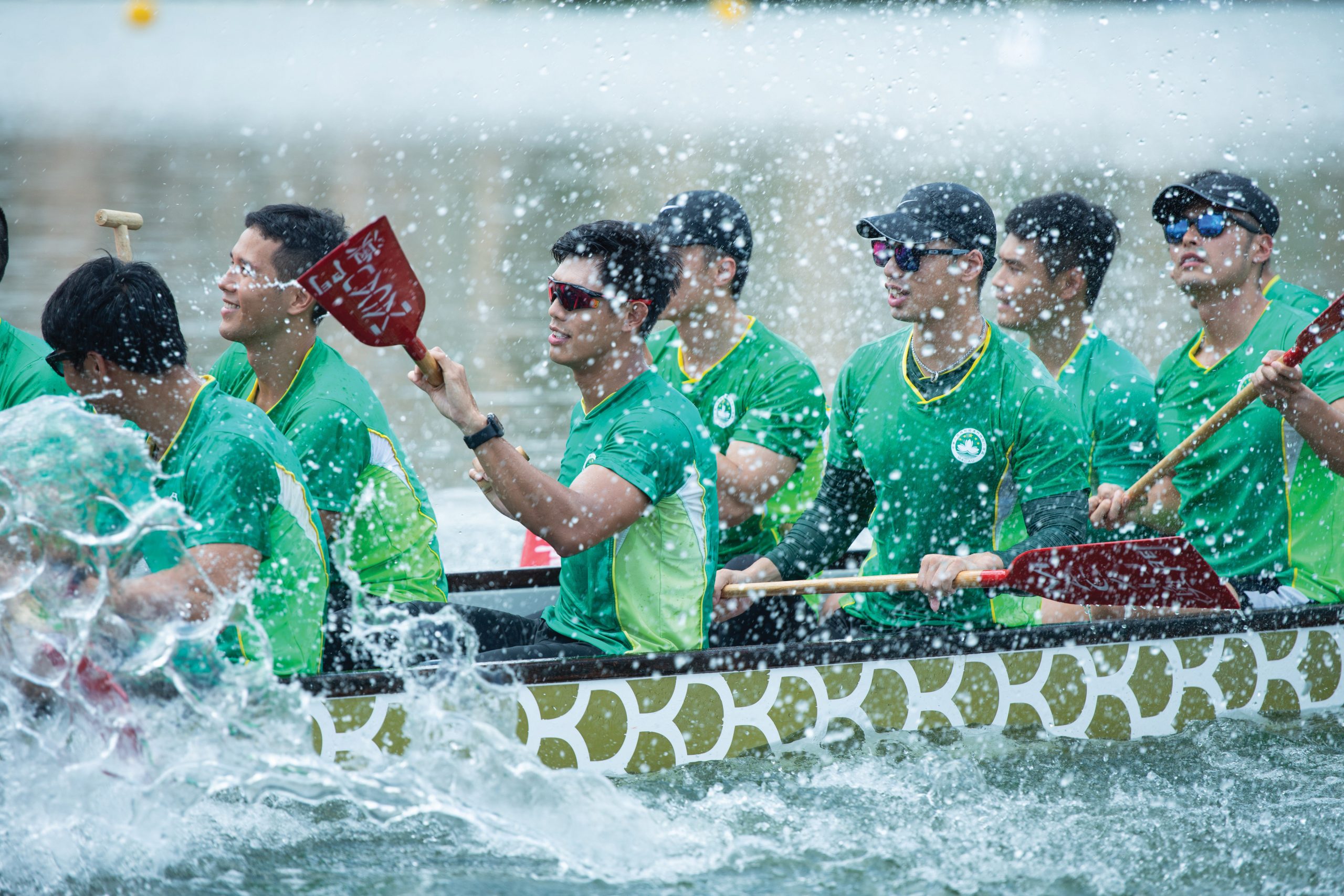
Dragon boat racing, part of the Dragon Boat Festival, is usually held in June and it’s a widely popular traditional event. Together with local associations, the Macao Sports Bureau hosts today’s fast-paced international competition.
29. Qixi (Single Girls Feast)
Qixi (Single Girls Feast), is a Chinese festival that celebrates the annual meeting of a cowherd and a weaver girl in mythology. People, mostly women, pray for wisdom and a good marriage on the seventh day of the seventh lunar month, which typically falls in August.
30. Yu Lan (Hungry Ghost Feast)
During the seventh lunar month, in August and September, Chinese people in Macao pray for the safety of their homes and families by offering food, as well as burning paper money for their ancestors and other ghosts.
31. Chong Chao (Moon Cake Festival)
On the 15th day of the eighth lunar month, usually in September, many Chinese families in Macao gather together to appreciate the full moon, eat moon cakes and enjoy valuable time together.
32. Chong Yeong (Worship of the Ancestors)
The Chong Yeong festival, which falls on the ninth day of the ninth lunar month, sees people worshipping their ancestors and praying for blessings. It’s also viewed as a time to pay respect to older people. Therefore, many community groups host chrysanthemum exhibitions in parks and organise tea parties for the seniors.
33. Winter Solstice Festivities
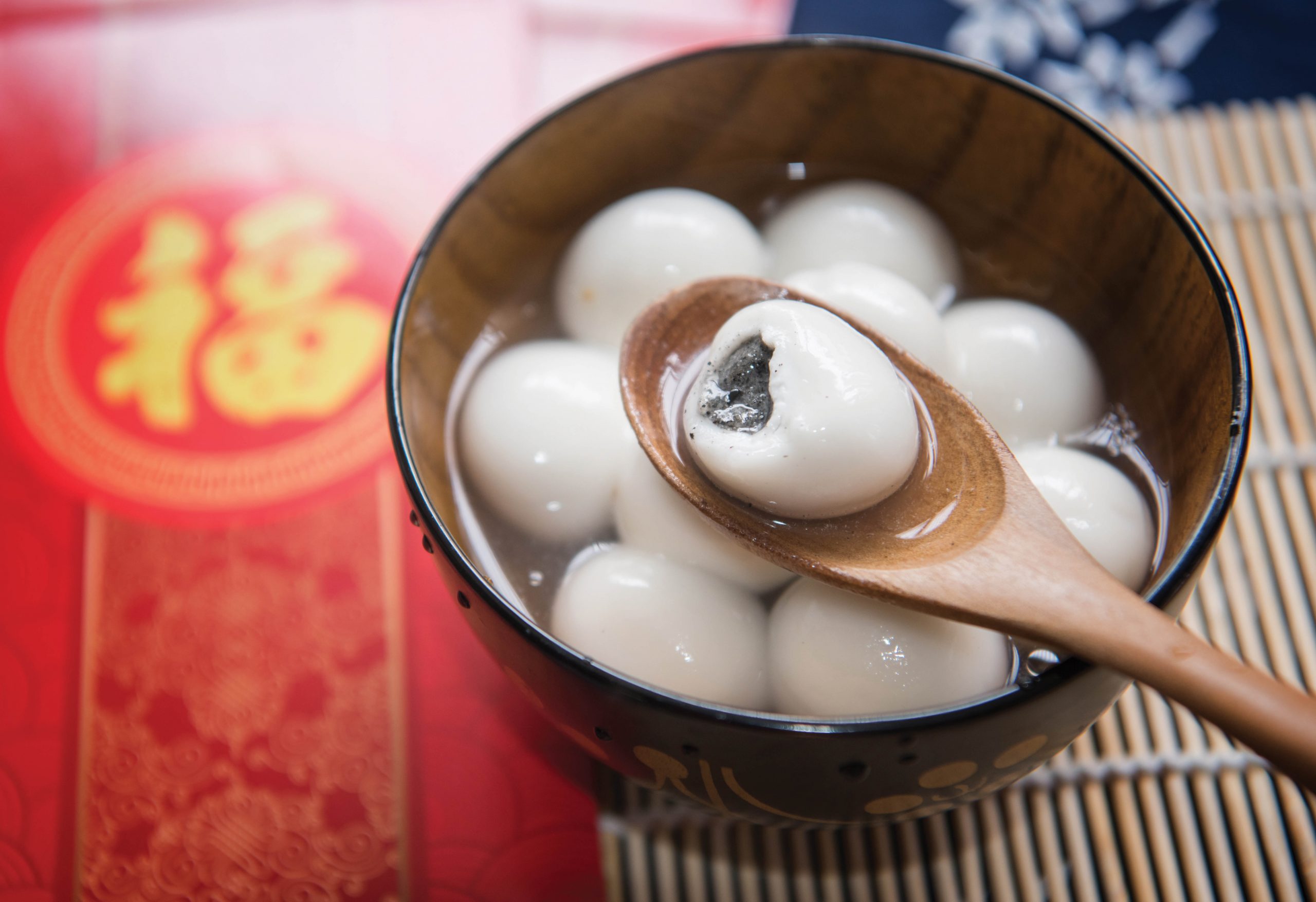
Between 21 and 23 December, the Winter Solstice symbolises the new beginning of the cycle of all living things. Family dinners and the eating of rice balls are traditional in Macao.
34. Seak Kam Tong Celebrations
On the seventh day of the first lunar month, worshippers celebrate Seak Kam Tong’s birthday, a Taoist deity who wards off evil, eliminates disasters and protects families.
35. Opening of Kun Iam’s Treasury
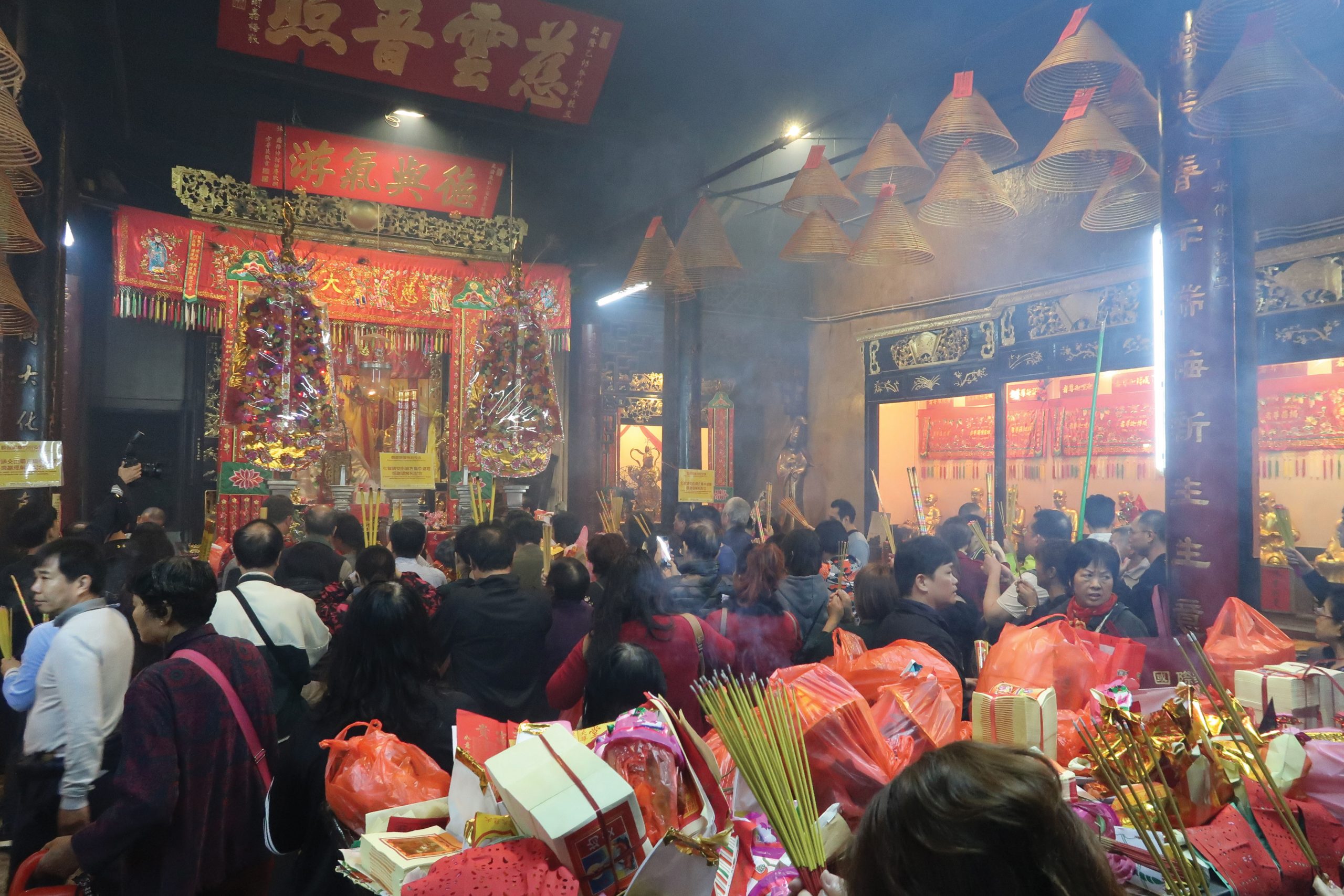
On the 26th day of the first lunar month, worshippers visit the temples dedicated to Kun Iam, the Chinese Buddhist goddess of mercy, to pray and “borrow money” from her.
36. Tai Wong Celebrations
On the 23rd day of the first lunar month, fishermen celebrate the birthday of Tai Wong, a god of the sea, by burning incense, sharing meat, performing lion dances and setting off fireworks.
37. Pao Kong Celebrations
Pao Kong is a deity and a symbol of justice due to his honesty when he was a politician during China’s Song dynasty. Today, worshippers in Macao celebrate his birthday on the 15th day of the second lunar month (usually in March) in temples dedicated to him.
38. Festivities of Kun Iam
Kun Iam has a lot of worshippers in Macao. During her birthday on the 19th day of the second lunar month, worshippers visit temples dedicated to the goddess to chant sutras and burn incense.
39. Pak Tai Celebrations
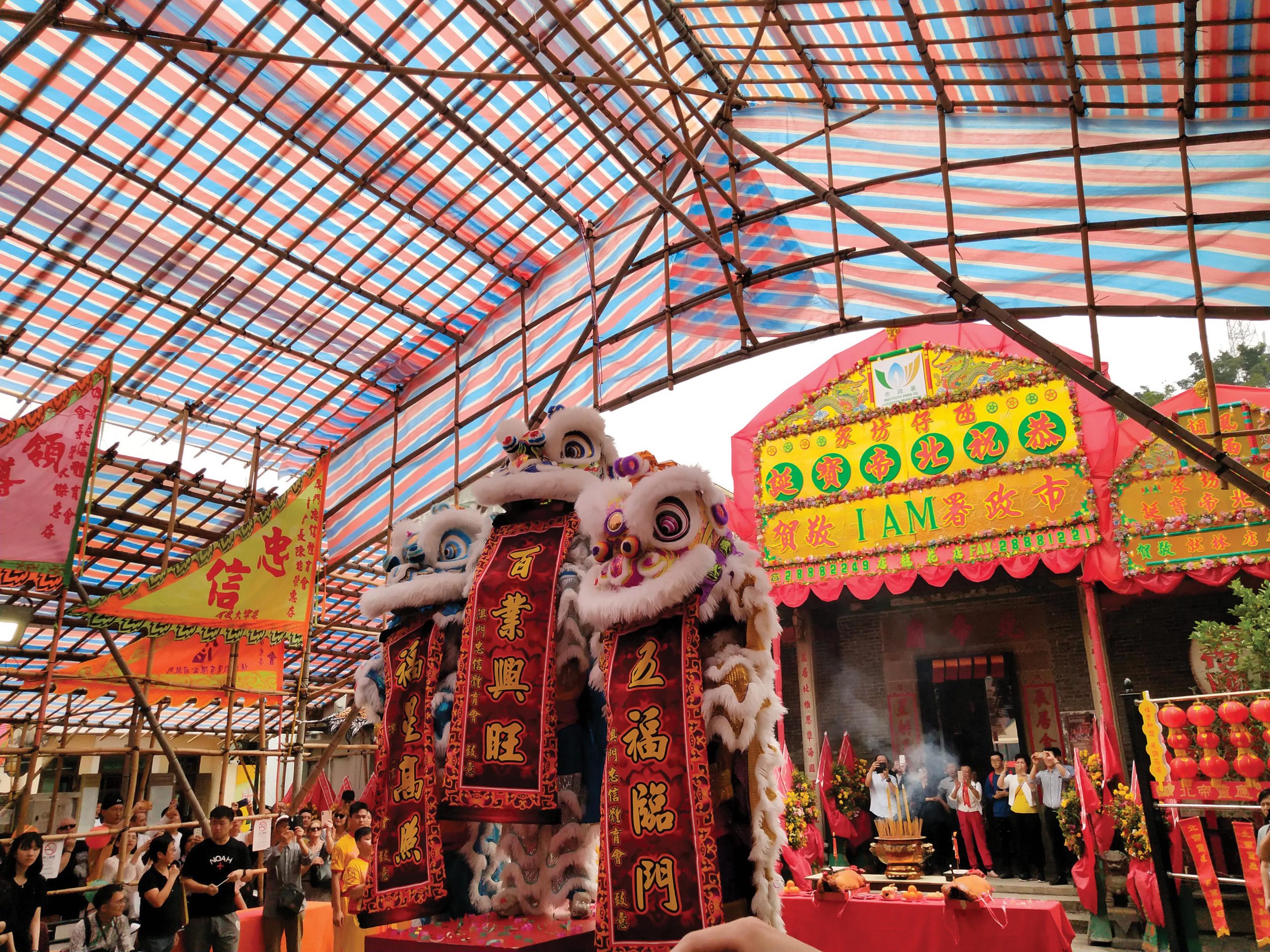
Pak Tai is a Taoist water god. Worshippers pray to the deity for good weather and protection against disasters and obstacles during his birthday on the third day of the third lunar month, which usually falls in mid-April.
40. Festivities of the Day of Buddha
Taking place on the eighth day of the fourth lunar month, this day celebrates the birth of Buddhism’s founder. In Macao, Buddhist temples organise rituals such as chanting sutras, “bathing the Buddha” and fascinating lectures.
41. Tam Kong Celebrations
This Taoist deity is seen as the protector of fishermen. Festivities are held to celebrate his birthday on the eighth day of the fourth lunar month. Expect Chinese operas that strive to entertain both the gods and humans.
42. Sin Fong Celebrations
On the sixth day of the sixth lunar month, worshippers celebrate this Taoist deity’s birthday and pray for his blessing and protection against disasters.
43. Lou Pan Celebrations
This Taoist deity is regarded as the protector of craftsmen, carpenters and cement workers. On the 13th day of the sixth lunar month, workers’ unions host rituals and gatherings at temples to celebrate his birthday.
44. Kuan Tai Celebrations
A Taoist god associated with loyalty and courage, Kuan Ta is thought to protect various industries. On the 24th day of the sixth lunar month, activities such as lion dances are held at temples to celebrate his birthday.
45. Hong Chan Kuan Celebrations
Local temples celebrate Taoist deity Hong Chan Kuan’s birthday on the seventh day of the seventh lunar month by holding lion dances, ribbon cuttings, communal “poon choi” feasts, and a traditional festival meal composed of many layers of ingredients such as pork, beef, abalone and prawn.
46. Va Kong Celebrations
Va Kong is regarded as the god of fire. Local temples celebrate his birthday on the 28th day of the ninth lunar month with lion dances, fairs and Chinese operas.
Conventional skills and techniques of traditional handicraft
47. Herbal Tea Brewing
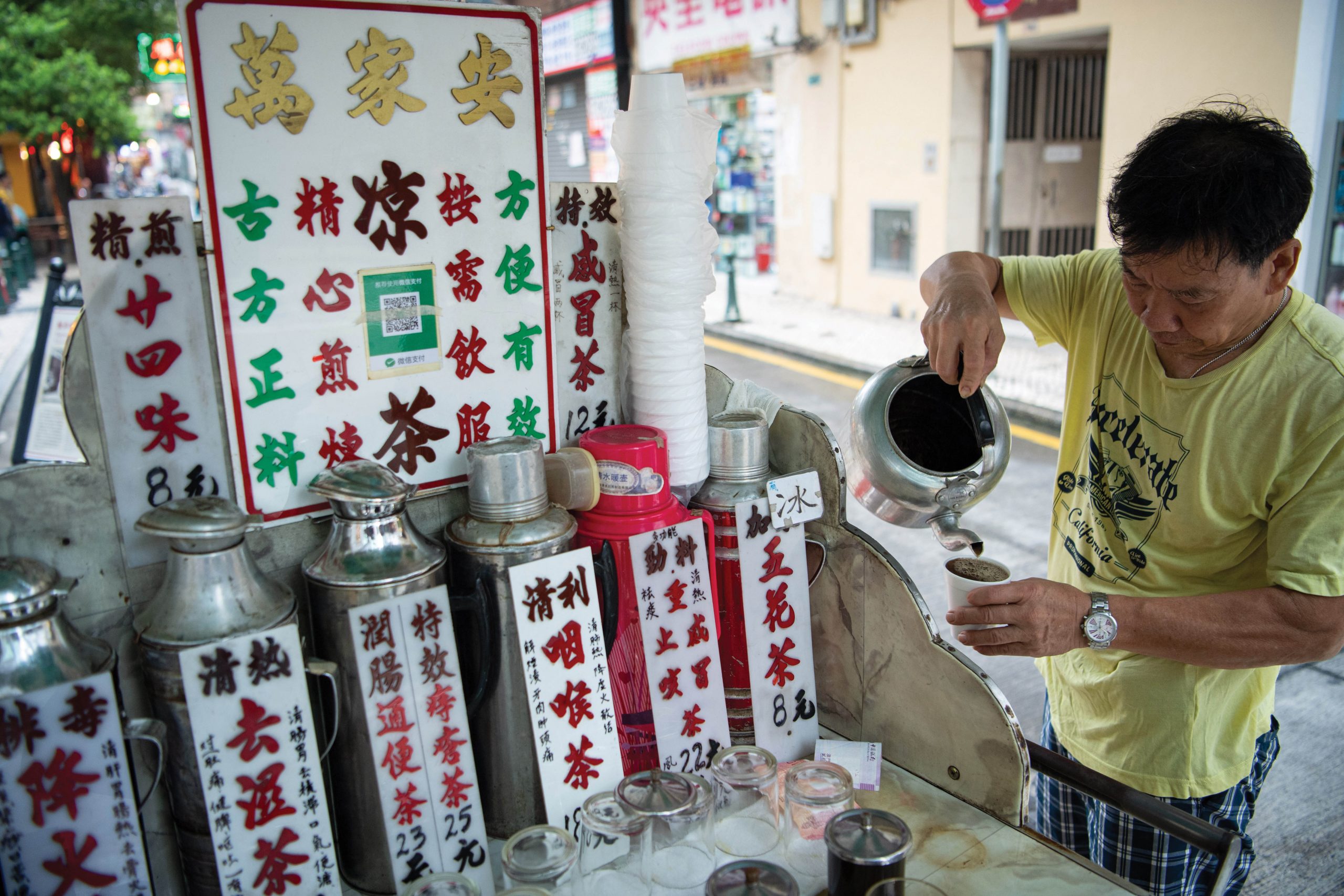
Herbal tea is made from purely Chinese medicinal herbs. It remains popular in Guangdong, as well as Macao and Hong Kong. With a history of over 2,000 years, Chinese medicinal tea has many health benefits, such as preventing diseases, aiding digestion, treating common colds and detoxifying the body.
48. Woodwork – Religious Figure Carving
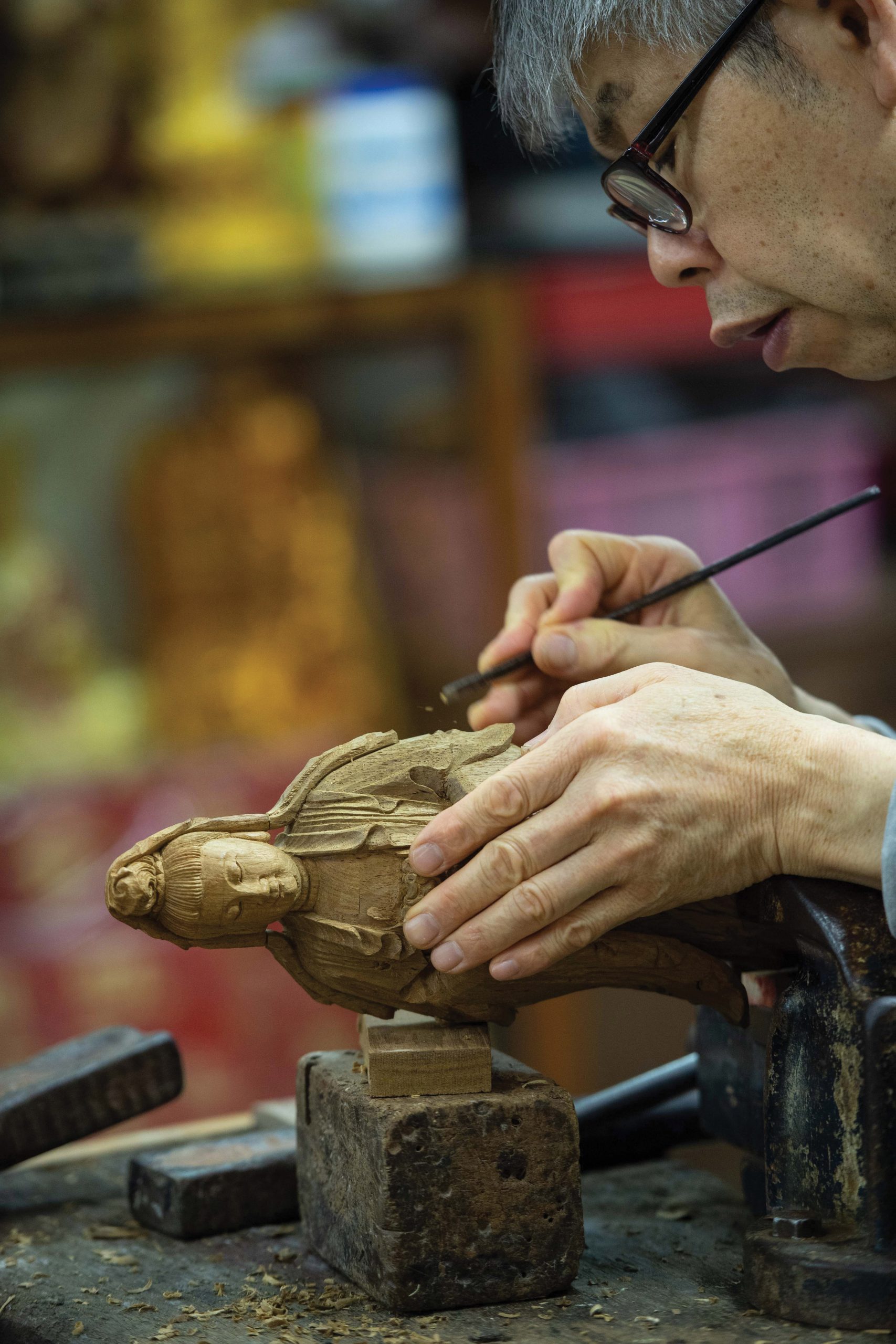
This is an intricate skill and art that has been handed down from generation to generation for almost a hundred years in Macao. Historically, the figures were worshipped by local fishermen for blessing and protection.
49. Macanese Gastronomy
As one of the world’s first fusion foods, Macanese cuisine brings together a unique combination of Chinese, Portuguese, Malaysian and African flavours, among others. It’s a delicious byproduct of the Portuguese spice trade, treasured by Macao residents and travellers alike.
50. Craft of Bamboo Scaffolding
An art form in Macao, bamboo scaffolding is commonly used to construct highrises, small arches and temporary Chinese opera stages. Scaffolders do not work based on a template or blueprint – instead, they guide themselves by experience and adapt each project to the scaffolding site.
51. Manufacture and Painting of Portuguese Tiles

Some street signs, churches and other buildings in Macao retain the old Portuguese tile paintings. Those who still create these beautifully ornate tiles in the city are highly skilled.
52. Manufacture of Cantonese Porcelain
Across Macao, you will find diverse styles of the Cantonese porcelain. They include hand-painted patterns characterised by Lingnan folk customs and paintings that cater to Western tastes.
53. Micro Engraving in Porcelain
When it comes to porcelain, a skilled combination of calligraphy and engraving makes up the elaborate art of micro gravure in Macao. The artist must carve extremely thin lines on the hard material – it’s a feat of talent and skill.
54. Mass Figure Sculpture
A Chinese folk art transforms steamed dough into sculptures of mythical characters and figures, using rubbing, kneading, cutting and colouring techniques.
55. Manufacture of Incense Sticks
Incense sticks are mainly used for worshipping, particularly in religious ceremonies. They’ve been manufactured for more than a century in Macao, with a major boom in the local industry between the 1950s and ‘70s.
56. Seong Ka Carpentry
Meaning ‘construction industry’ in Cantonese, Seong Ka carpentry refers to the traditional large-scale woodwork commonly used in Chinese-style buildings, such as temples and residential houses.
57. Making the Chinese Cheongsam
The making of beautiful, body-hugging cheongsam dresses is a celebrated art in Macao. Respected artisans use traditional techniques like cloth cutting, soaking, drying, shaping and sewing. Though it was once an everyday staple, today women wear cheongsam dresses on special occasions such as banquets and galas.
58. Making Chinese Wedding Dresses
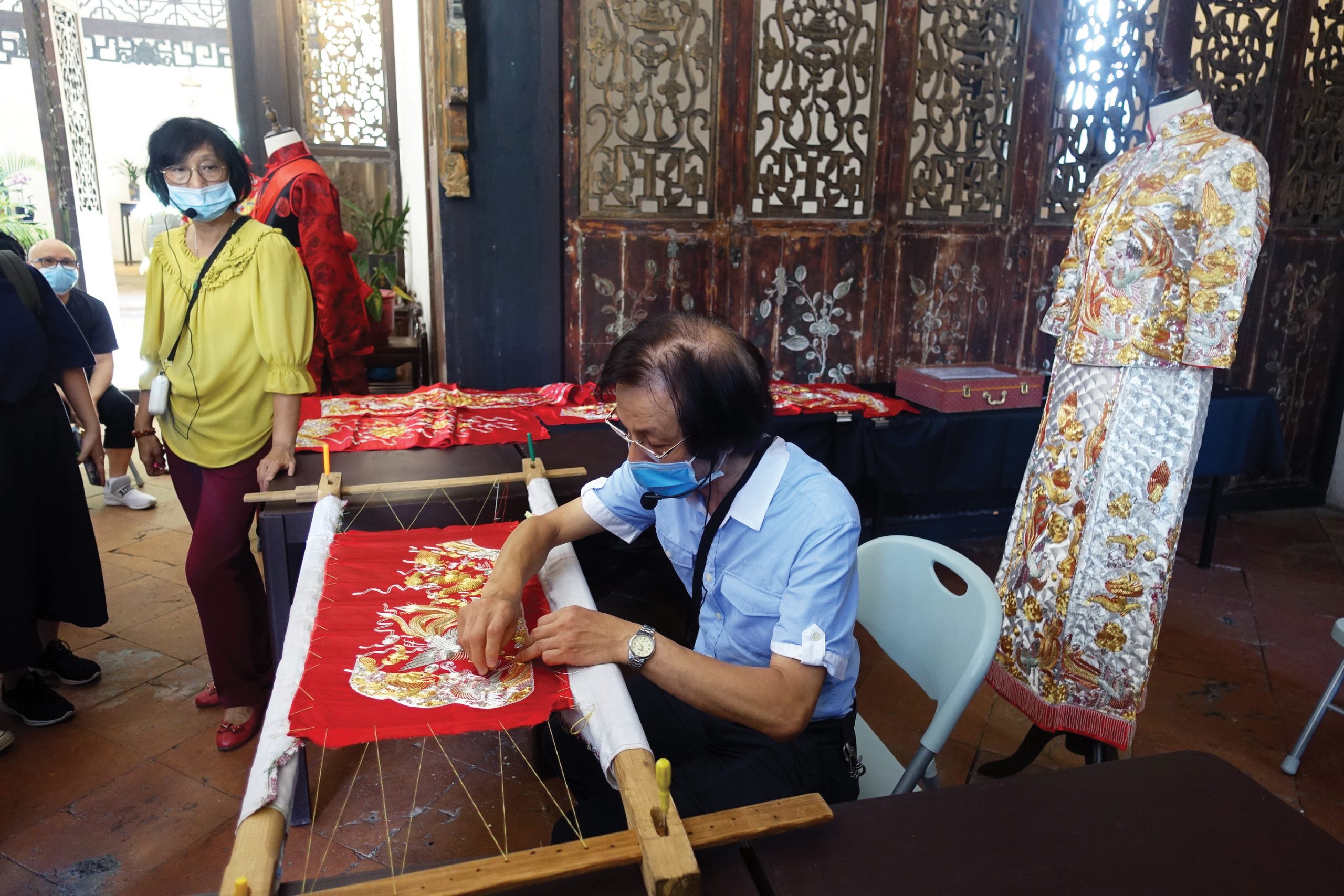
Many people have also made Chinese wedding dresses in Macao over the years. They have to be entirely handmade by only one person so that the pattern remains symmetric, and the exquisite embroidery stays consistent.
59. Macanese Gastronomy – Confection of the Alua
Symbolising the mattress where baby Jesus is said to have slept, alua is a dessert that’s mostly eaten during Macao’s Christmas period. It’s made with glutinous rice flour, coconuts, sugar, almonds, pine nuts and plenty of butter.
60. Confection of Custard Tarts
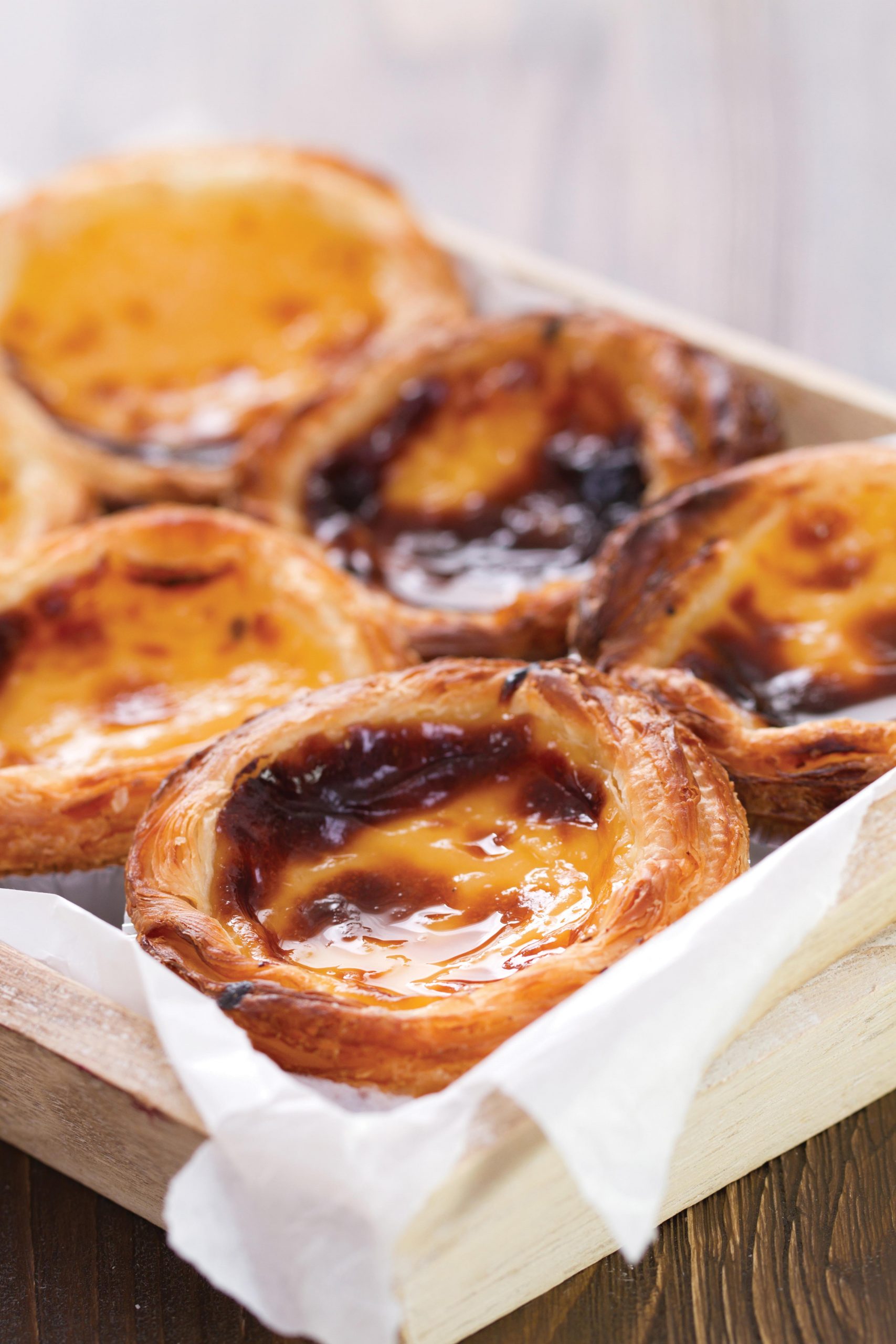
Custard tarts – also known as egg tarts – are incredibly popular in Macao. Initially introduced by the Portuguese, they are made from flour, butter, eggs, milk, cream and sugar.
61. Confection of Dragonbeard Candy
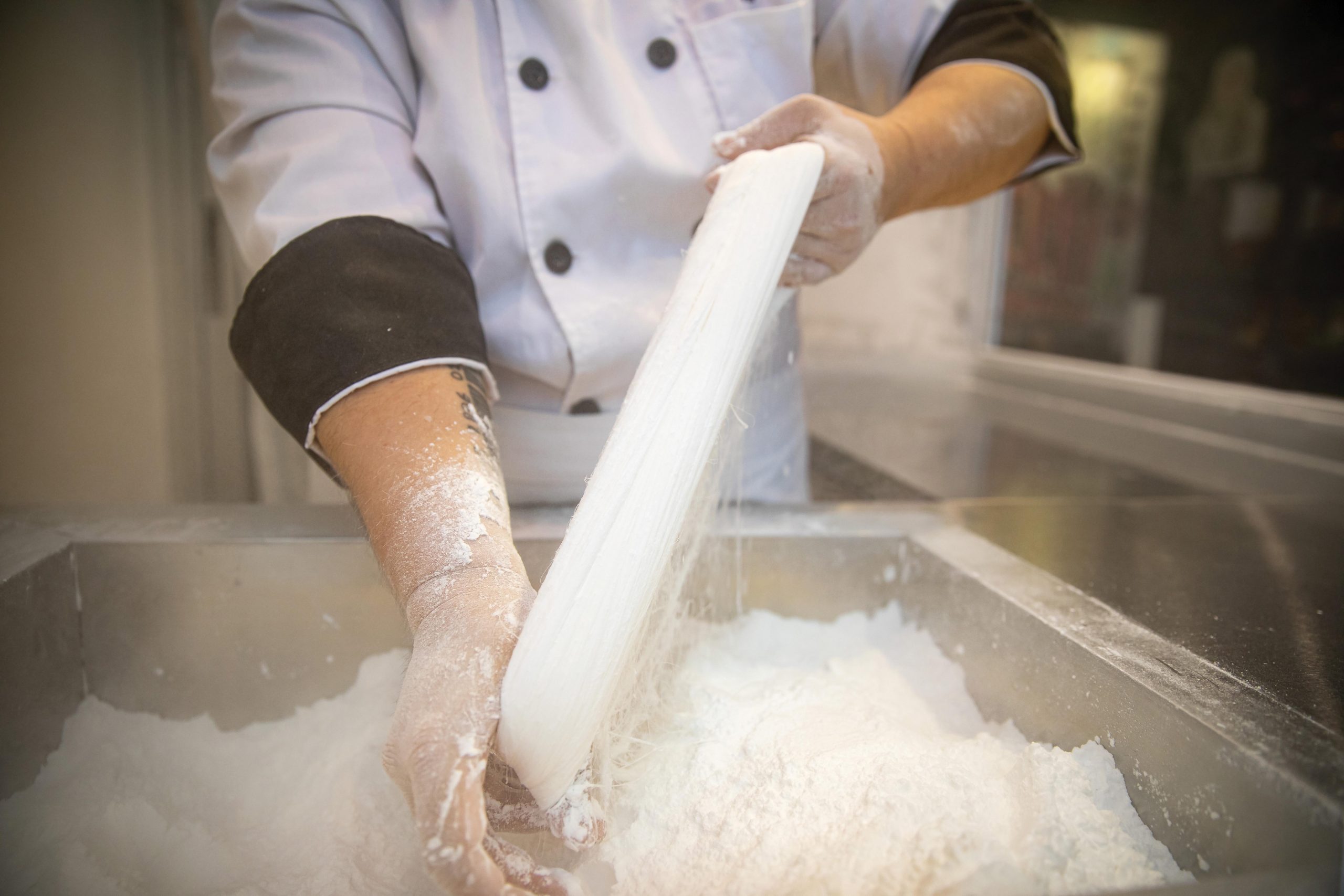
Dragonbeard – or dragon’s beard – candy is a traditional snack made from glutinous rice flour, sugar and maltose syrup and contains fillings like peanuts, sesame and shredded coconut. Its history dates back 1,000 years in China, and it’s cherished in Macao.
62. Confection of Chinese Pastries
Chinese pastries vary in different regions according to the local culture. Macao’s most common types include almond cakes, white sugar sponge cakes, banana cakes, or walnut cookies.
63. Confection of Almond Biscuits
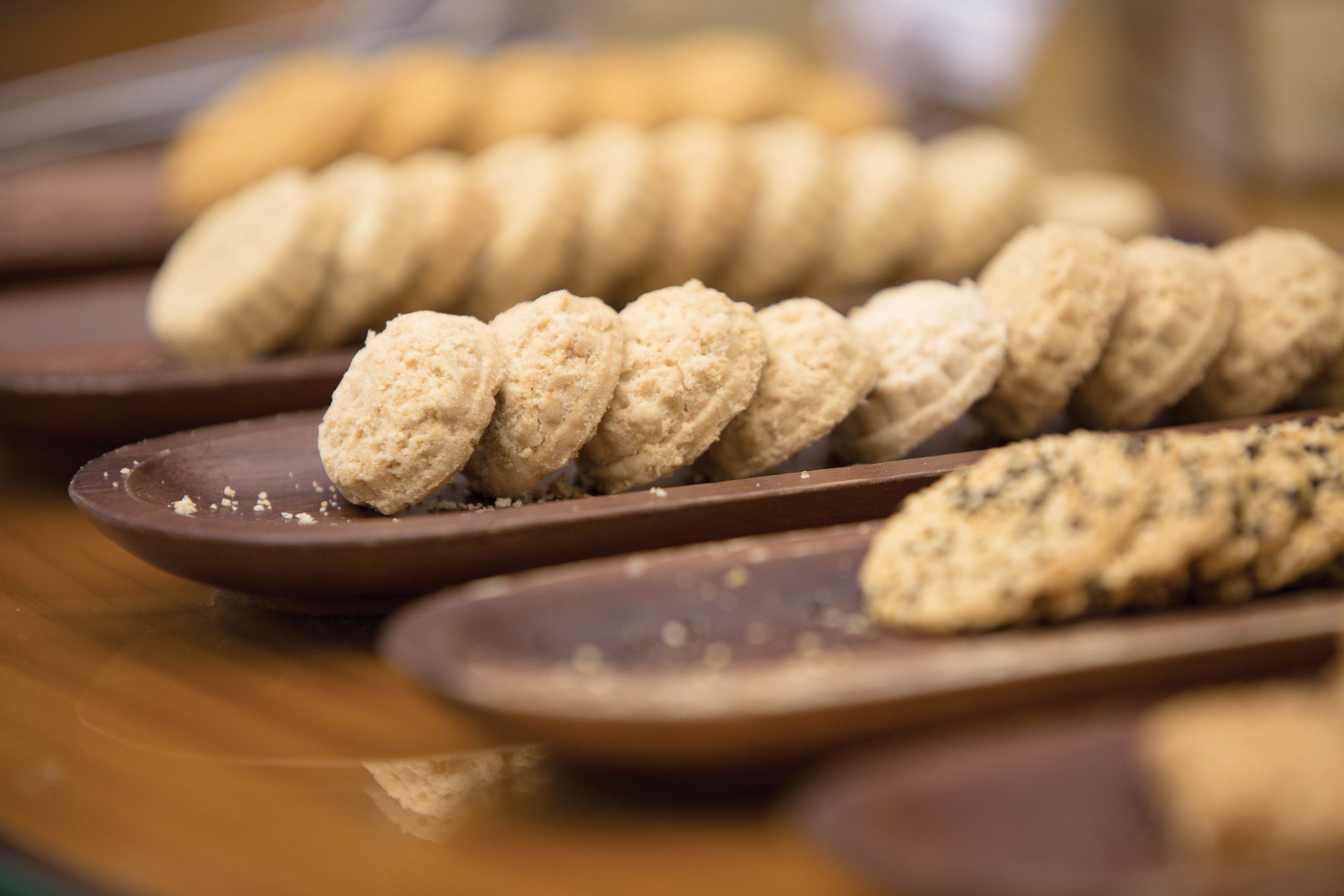
Almond cake is one of Macao’s most popular Chinese pastries. It originated in the Xiangshan region of Guangdong and was introduced to the city in the early 20th century. It is named after its almond shape and almond flavour.
64. Confection of Traditional Chinese Wedding Cakes
These cakes are traditional wedding gifts in Macao. Options include a dragon- and phoenix-inspired bride cake, as well as wedding pastry cakes decorated with red-and-white twill.
65. Making of Traditional Chinese Sauces
Sauces have a long history in Macao. Years ago, they were all handmade by skilled cooks. Popular varieties still include soy sauce, soybean paste and chilli garlic sauce.
66. Confection of Preserved Fruits
Preserved fruits are traditional snacks in Macao. They come from the fine tradition of farmers storing and marinating a variety of fruits.
67. Confection of Jook-Sing Noodles
Exclusive to China’s Pearl River Delta region, Jook-sing noodles are made by hand with eggs – traditionally duck eggs. Historically, the chef used to ride a bamboo log like a see-saw to press all the ingredients together.
Knowledge and practice regarding nature and the universe
68. Tai Chi Martial Arts
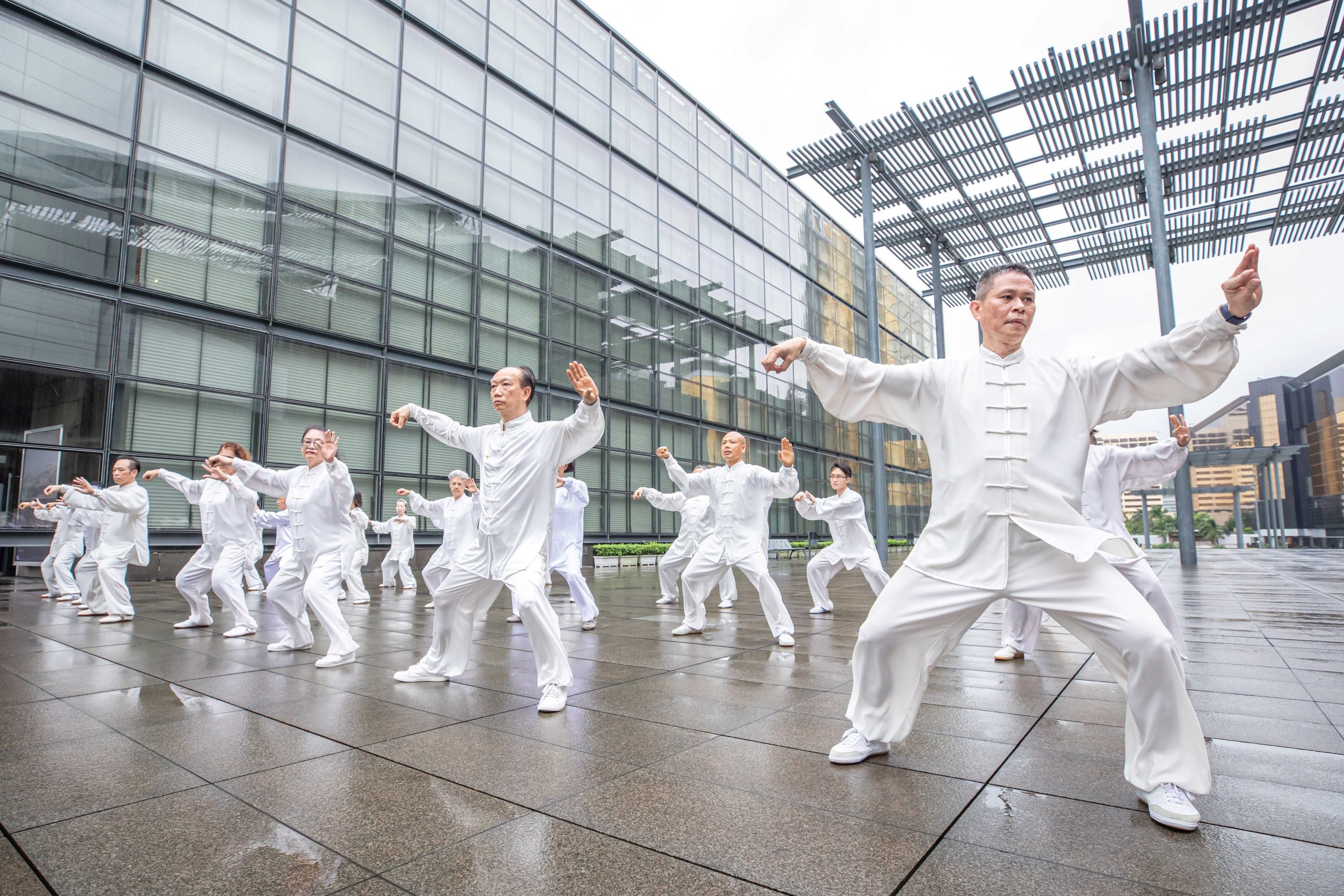
Tai chi is a popular martial art in Macao that’s practised as much for its health and meditative benefits as it is for defence training. Many classes and groups are held by organisations and sports clubs in the city.
69. Wing Chun Martial Arts
A traditional Chinese martial art that dates back to the Qing Dynasty, wing chun is mainly promoted by martial arts organisations and sports clubs in Macao. It’s a style of self-defence that champions softness and performing its techniques in a relaxed manner.
70. Choi Lei Fat Martial Arts
Originating in Xinhui, Guangdong, this martial art has been practised by people in Macao since the 1920s. It emphasises the pursuit of truth, justice and other traditional moral virtues.
